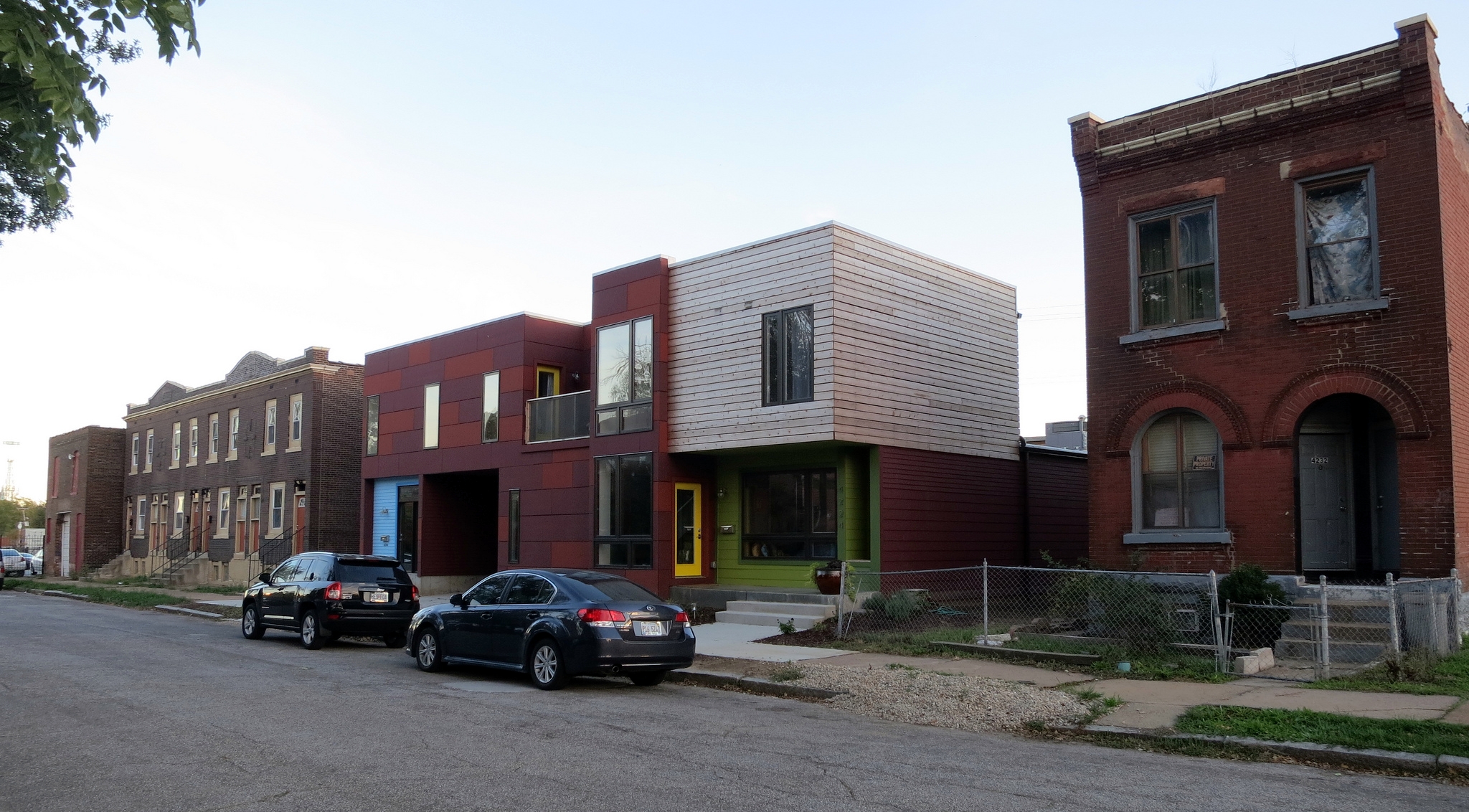
There's more than one way to combat urban vacancy. In fact, there are many, but two extremes recently crossed our desk that well highlight the need for cities to persue and all-of-the-above approach. In Cleveland, a developer aimed to renovate a 1,400 square foot, 1889 Victorian for less than the cost of demolition, $10,000. The final product is smart, beautiful and rented, for $500 per month, more than enough to cover the investment.
There are more than 20,000 vacant homes in Cuyahoga County according to some estimates. Since 2009, that county's land bank has demolished more than 2,000 homes, and is constantly seeking more money to demolish more of Cleveland. A similar story can be told in Detroit, Youngstown, St. Louis and elsewhere. In St. Louis, the city's website is touting a recent ~$300,000 infill project in The Grove neighborhood built on vacant land owned by the local land bank. The single-family residence with an add-on 1br apartment has a contemporary aesthetic and was built for a couple seeking to make the neighborhood a permanent home.
The point is that both are great and needed in places like St. Louis. Though, to be honest and point a way forward, it's the $10,000 renovation is that isn't encouraged here. The ballpark figure the city's Land Reutilization Authority (LRA) cites for an historic renovation is $80-$100 per square foot, or what could have been $140,000 for the rescued Cleveland Victorian. Although the numbers are not easily accessible, thousands of 800-2,000 square foot homes have been demolished in St. Louis over the past decade. Thousands more are threatened.
The $10,000 rehab was accomplished by repurposing materials on site, shopping at the local Habitat Re-Store and offering a stripped down interior. It's loft-like, as some walls, and even most of the second story floor, were removed. A wall that isn't there doesn't need to be drywalled and finished. Projects like this use cheap local labor, ex-cons, handymen, whoever can do the work. And it works.

{the Cleveland Victorian rehab is a stripped down, cost-effective and livable rehab – image by Freshwater Cleveland}

{without high-end furnishings, the rehab still presents a finished product – image by Cleveland.com}

{the kitchen island and shelving repurposed materials from the partial interior demo – image by Cleveland.com}
Demolition can be necessary, but most are not. There's a moment, a tipping point, at which a neighborhood ceases to exist because of the loss of residential fabric. There's a point where there are simply too many vacant lots to form a community. Sitting and waiting for multi-unit infill projects has proven to be a false hope. Where successful examples exist, they are notable for their rarity. This is emblematic of St. Louis.
It's easy to celebrate The Grove infill project. It has a modern aesthetic, was designed by a city architecture firm just a few blocks from the home site, made use of two city-owned vacant lots, and fulfills a dream of the homeowners; exactly the type of people St. Louis needs to keep. The contemporary home itself is helping change the perception of the neighborhood and city. The clear hope is that the project will serve as a model for others and ultimately be the impetus for others modern infill projects. Big investments in the city matter. In fact, the project has already been the catalyst for the quality rehab of an adjacent multi-family building. This is one end of a city-wide solution.

{The Grove infill is changing perceptions of the neighborhood and city, and catalyzing adjacent investment}
How can St. Louis embrace and facilitate both of the above (and everything in between)? It starts with an openness by developers, city government and the LRA to experiment, to reward brainstorms on the crumbling built environment. With some irony, the successful state Historic Tax Credit program in Missouri has likely led too many to believe that the magic redevelopment number for an historic home = purchase price + historic renovation – state/fed tax credits. This is part of an all-of-the-above approach, but clearly sets the bar high for saving a building, too high for too many buildings. The expectation cannot be that each building saved be an historic redevelopment.
Who will build the next contemporary infill in St. Louis? Who will present the $10,000 rehab a productive and positive manner to developers, the city and LRA? In fact, the vacant property immediately next to the contemporary infill project (right) could be the perfect $10,000 project:

{the contemporary infill project has encouraged redevelopment of the adjacent multi-family building (left) while a vacant home remains next door (right)}
*top image by Freshwater Cleveland


